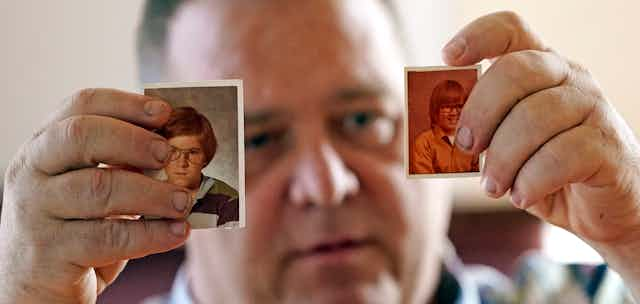The Boy Scouts of America has filed for bankruptcy to figure out how to fairly compensate thousands of survivors of alleged sexual abuse who accuse the Scouts of neglecting to protect them.
Revelations regarding decades of the abuse of children and long-running institutional failures to stop the abuse are raising questions about the future of the Boy Scouts and what will become of its troops. The Scouts’ initial bankruptcy documents state that 275 lawsuits are pending in state and federal courts across the country, and that attorneys for survivors estimate another 1,400 claims will be filed. The Scouts disclosed that they have spent US$150 million on settlements and legal fees between 2017 and 2019.
I’m a legal scholar who has studied the bankruptcy cases filed by hundreds of nonprofits, including religious ones like Catholic dioceses. Based on what I’ve observed, I anticipate that this step may allow the Boy Scouts to continue operating and to establish an effective way to adjudicate and pay sexual abuse survivors.
Bankruptcy 101
The situation that the Boy Scouts find themselves in is atypical for bankruptcy cases.
Generally, bankruptcy automatically halts civil lawsuits pending against the filing organization and prevents subsequent lawsuits based on conduct that occurred before the organization’s bankruptcy case. This pause lets troubled organizations continue operating.
In Chapter 11 bankruptcy, also called reorganization, the debtor gets time to work with its creditors and other parties – and a chance to get their operations in order. In these two instances, that would include sexual abuse survivors and the organization’s liability insurance carriers.
Businesses that file bankruptcy often find themselves in trouble because of financial missteps, poor management or changes in the business environment. For example, retail bankruptcies, such as the filings of Sears, Nine West and Mattress Firm, are rising because of drastic changes in how Americans shop.
The same factors hold true for most of the approximately 125 nonprofits that file for Chapter 11 every year, as I established through my in-depth study of the bankruptcy filings of churches and other religious nonprofits.
Insurers are key
The waves of sexual abuse allegations leveled against the Boy Scouts closely resemble the numerous Catholic diocese bankruptcy cases filed in places where clergy stand accused of sexually abusing children.
Since 2004, more than 25 Catholic religious orders and dioceses – the ecclesiastical districts under a bishop’s jurisdiction – have filed for Chapter 11 bankruptcy with the stated purpose of dealing with numerous sexual abuse accusations.
The Catholic diocese reorganizations so far have led to settlements totaling over $1 billion. In most cases, insurers have agreed to foot more than half of the bill.

Making deals
Likewise, the ability of the Boy Scouts to reorganize successfully will hinge on whether they can reach deals with their insurers.
They will need to work with insurers to determine the scope of coverage to resolve its many abuse claims. Filing for bankruptcy would make way for negotiations with insurers over these payments.
The Boy Scouts’ proposed reorganization plan contemplates setting up a Victims Compensation Trust that will make payments to survivors out of insurance money and to-be-determined assets contributed by the Boy Scouts. The plan also suggests that local councils and chartered organizations, which are churches, schools and other local nonprofits granted the right to operate scouting units, may contribute assets to the trust.
Abuse survivors will likely get more money if the Boy Scouts can reach agreements with their insurers.
Camps and troops
In bankruptcy, only the filing business’ or nonprofit’s assets, debts and operations are subject to the reorganization. For Catholic dioceses that have filed, this means that only the property owned by the diocese is available to sell to pay survivors’ claims. Because dioceses usually do not own parish churches, which typically belong to parishes, those buildings are not subject to be sold to fund settlements.
Could the Boy Scouts’ case turn out differently? The national organization appears to be predicting that it won’t. But Boy Scouts of America does not merely set the rules guiding its packs that bring together 2.4 million youth members and nearly 1 million adult volunteers. It supervises agreements between local scout councils and chartered organizations that independently run scouting programs.
The national organization manages some camps and other properties that might be subject to sale, including in bankruptcy, to fund settlements to survivors. Local councils and independent organizations potentially could be required to sell assets or otherwise fund a portion of the Victims Compensation Trust.
Restoring faith
An advantage of bankruptcy is that it requires all creditors with similar claims to be compensated proportionally rather than on a first-come-first-served basis. This encourages survivors to work together to push leaders to negotiate with insurance carriers and to find other ways to fund settlements.
The reorganization process gives leaders a chance to show that they are committed to rebuilding their organizations and wisely managing their expenses. In this #MeToo era, I anticipate seeing more nonprofits become mired in damaging allegations and subsequently filing for bankruptcy under these circumstances.
This is an updated and condensed version of an article originally published on Feb. 8, 2019.
[Get the best of The Conversation, every weekend. Sign up for our weekly newsletter.]

